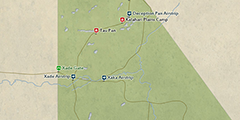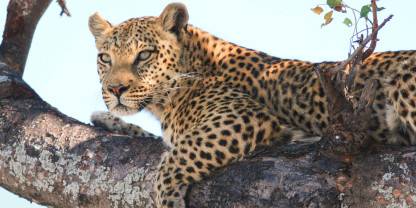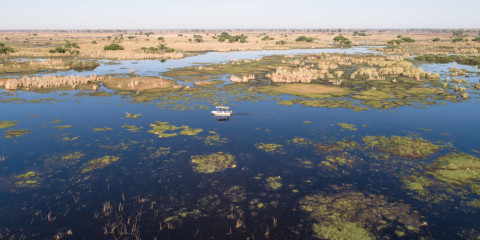Filling the heart of Botswana, Central Kalahari Game Reserve is so big you could squeeze most other Botswana parks into its boundaries and still have room to spare. This is a magical Kalahari destination, a world of remote trails, golden grasslands, ancient river valleys and expansive pans, with some outstanding wildlife possibilities. There really is nothing quite like camping out under a Kalahari sky, or watching a black-maned Kalahari lion walk the length of legendary Deception Valley at sunrise.

-
Best Time To Go
- December to March (Best in Deception Valley)
-
High Season
- July to October (It rarely gets crowded)
-
Size
- 52,800km² / 20,386mi²
-
Altitude
-
941-1,132m /3,087-3,714ft
 View Photos
View Photos
 View Photos
+24
Photos
View Photos
+24
Photos
 Open Map
Open Map
Pros & Cons
- Adventurous wilderness destination
- Fantastic camping options across all areas of the vast reserve
- Superb and varied desert scenery
- There is a chance you’ll see black-maned Kalahari lions
- Well-suited to self-drive safaris, but you need to be self-sufficient
- Apart from simple campsites, there are few accommodations in and outside the park
- Animals live at generally lower densities than in other parks
- Possibility of temperature extremes, with cold nights and hot days
Wildlife
Desert-adapted antelope, such as springbok and oryx, can be seen grazing on the grasslands in the pans, valleys and low hills. Predators are sometimes spotted on the plains. The black-maned Kalahari lions are particular highlights, and cheetah thrive in this open country. Lucky visitors might even come across gregarious family groups of bat-eared foxes, charismatic honey badgers, or brown hyenas (mostly active at night).
More about Central Kalahari’s wildlifeScenery
As with all desert environments, in the harsh glare of midday, the Kalahari can look like an overexposed photograph. But the magical light that turns the landscape golden in the first hours after sunrise and before sunset is when you’ll really love being here. Features of the landscape include expansive grass-filled valleys, and low sandhills covered in desert vegetation.
Activities
Guided and self-guided are the only possible activities in Central Kalahari Game Reserve. Both are ideal for wildlife viewing and bird watching as you explore the park. The officials at the reserve gates sometimes hand out photocopied maps of the northern part of the reserve. Otherwise, use a GPS device or one of the other printed maps available for sale around Botswana. The better ones have distances and estimated driving times marked.
Weather & Climate
The desert climate of the Central Kalahari is at its most testing in the Dry season (April to October), with average daytime temperatures peaking at 34°C/93°F. The exception is early in the morning when you’ll need to rug up against the chill if you’re doing a . The Wet season (November to March) cools things down with its occasional showers.
More about the weather and climateBest Time To Visit
For prime wildlife viewing and fewer crowds, you should avoid the driest times of year and visit in the wet months, from December to March. This is when animals make the most of the returning rain by gathering around the pans in Deception Valley and elsewhere. You will also enjoy low-season prices in some lodges. The trade-off is that some roads can be very muddy.
More about the best time to visit



